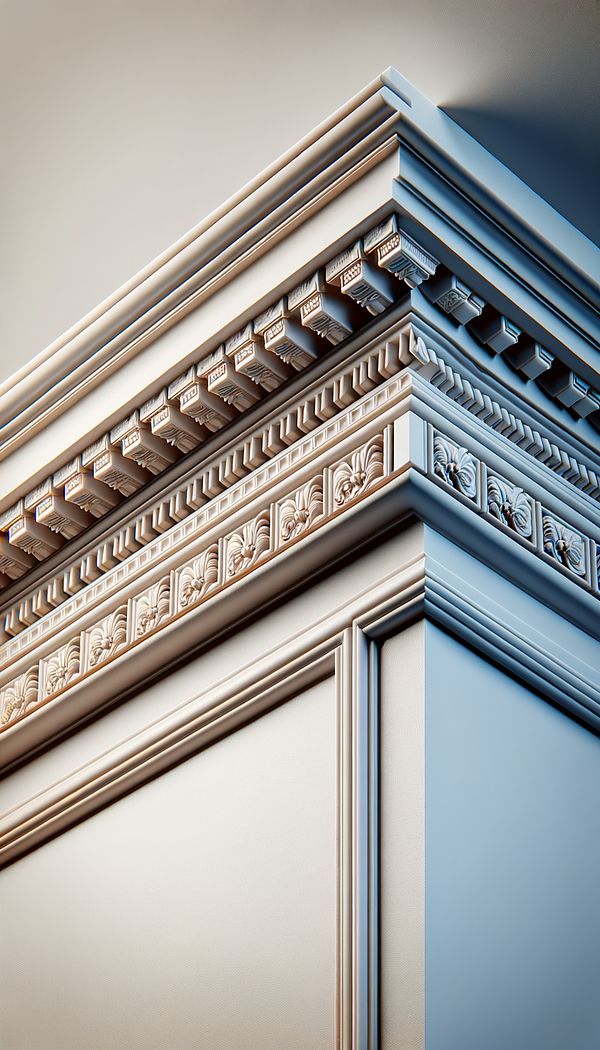What is Dentil Molding?
Dentil molding is a decorative architectural element featuring a series of closely spaced, rectangular blocks.
Description
Dentil molding is a classic architectural element that traces its origins back to ancient Greek and Roman architecture. This decorative feature consists of a series of closely spaced, rectangular blocks that resemble teeth - hence the name, derived from the Latin word 'dens', meaning tooth. Present in both interior and exterior design, dentil molding adds a touch of classical elegance and detail to a space or structure.
This type of molding is most commonly found as a horizontal band of blocks and is a staple in design styles that favor ornamental and elaborate decorations, such as Colonial, Georgian, and Neoclassical designs. While traditionally made from wood or stone, modern advancements have introduced variants in materials like plaster, concrete, and even synthetic products, allowing for versatility in use and application.
Dentil molding can be used to accentuate the transition between walls and ceilings, along rooflines, or around doors and windows. Its repetitive, geometric pattern brings a rhythmic beauty to the architecture, enhancing both the visual appeal and the perceived value of a property.
Usage
In a historical renovation project, a designer may choose to incorporate dentil molding along the cornice of a Colonial-style home to maintain its architectural integrity. Similarly, in modern interior design, dentil molding could be used as a decorative trim around the perimeter of a room to add a sophisticated, classical touch.
FAQs
-
Is dentil molding only suitable for historical buildings?
No, dentil molding can be used in both historical and modern design settings. It brings a classic aesthetic that suits various styles, whether restoring a period property or adding character to a contemporary space.
-
Can dentil molding be used outdoors?
Yes, dentil molding is suitable for both interior and exterior applications. Depending on the material, it can be used to enhance the architectural details of a building’s facade or garden structures.
-
What materials are commonly used for dentil molding?
Traditionally, dentil molding was made from wood or stone. However, modern materials like plaster, concrete, and synthetic polymers are also popular, providing durability and ease of molding.
Practical Application
When incorporating dentil molding into your design, consider the scale and proportion relative to the space to avoid overwhelming the overall aesthetic. Matching the material and finish with the existing decor will ensure a cohesive look. For exterior applications, selecting weather-resistant materials will guarantee longevity and maintain the beauty of the architectural detail.
-
Architectural Elements199 articles
-
Design Styles478 articles
-
Historical Periods & Movements150 articles
-
Wall & Ceiling Treatments35 articles
-
Materials & Textiles360 articles
-
Spade FootSpade Foot refers to a style of furniture leg that resembles the shape of a spade.
-
FiguringFiguring refers to the natural patterns and markings found in wood.
-
Helical WireHelical wire is a type of wire twisted into a helix or spiral form, often used in furniture and mattress construction.
-
Bed-In-A-BagA bed-in-a-bag is a complete bedding set that includes every piece needed for a bed, all packaged together.
-
BattingBatting is a layer of material used to provide padding and insulation.
